The last two nights have been astonishingly cold, considering it is early October-not early November. This morning, my brown sweet potato vines were limp-the effect of too much cold, and gravity. The summer season is indeed coming to a close. Most of my pots have been cleaned out. The olive tree and rosemary have been repotted, and have been brought into the greenhouse.
The red leaved hibiscus looks much like the potato vine-all of its spirit has drained away. The summer season is coming to a close much faster than I bargained for. But I have a spring ahead, that needs my attention. The spring flowering bulbs need to be planted now, if I plan to see them begin to bloom next March.
There are lots of good reasons not to plant bulbs. The air temperature is cold-the soil temperature is wet and cold. Planting brown orbs is momumentally unsatisfying. Once placed below ground, there is nothing to show for the effort. The fruits of the efforts are months away. Do you remember where you had crocus, and where you need more? I don’t either.
Can you remember where you thought a few more alliums would be good? Me neither. Are you tired to the bone from trying to keep your garden watered in extraordinary heat that characterized this season, and irritated about the lack of rain? Can we not get some rain?
As irritating as a frustrating gardening season can be, the future requires a fresh eye. At this time of year a fresh eye takes the form of a round, brown, and plump bulb. Or in the case of anemone blanda, a brown, wrinkled and dry bulb.
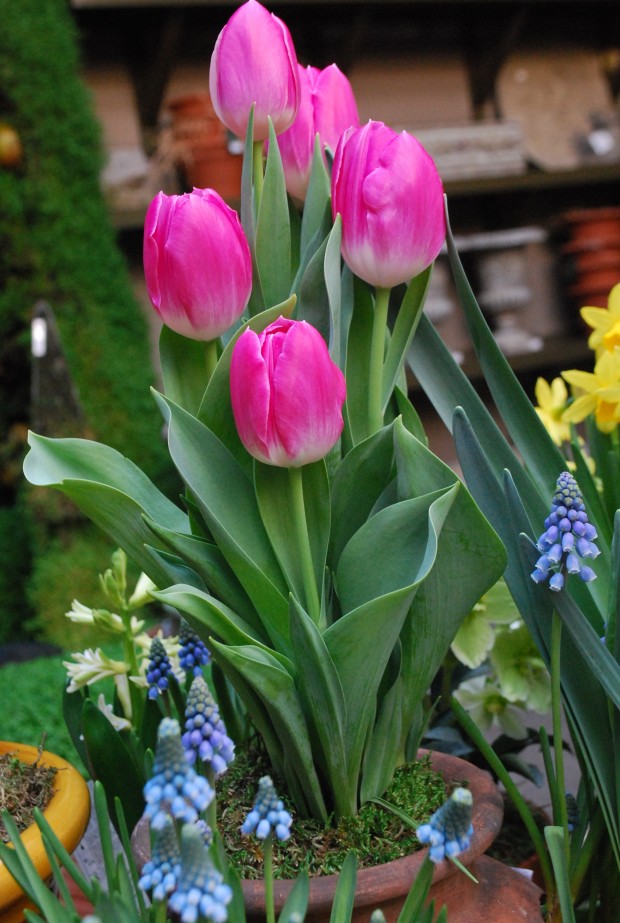
It is a miracle of nature-how a tulip and its flower and leaves are sleeping, entirely contained inside a bulb. A tulip bulb is a small, fairly round, and brown papery promise of what is to come.
Number one grade daffodil bulbs are more complex in shape-but they are just as brown and inert. Globemaster Allium bulbs are quite large, and juicy looking. Allium albopilosum-is anyone in there? I understand that when my fall bulbs arrive, they are dormant. They need planting. They need a cold period of a good many weeks. But to look at them, it is hard to imagine the life that is inside.
Spring blooming crocus are such a relief in March. They are not so expensive-it is very easy to sign up for a hundred or more. Once those 100 bulbs arrive, the thought of planting one hundred of anything seems formidable. The small package that they arrive in is easy to loose track of.
All of this said, I would be most disappointed in myself if spring arrived, with no spring flowering bulbs breaking ground. I would only have myself to blame. It would just be much better if I could break free of that image of my cold sacked potato vine, and invest in my future.
I rarely plant spring flowering bulbs in the ground. Most of what I do in ground involves crocus, hybrid trout lilies, and snow drops. Planting bulbs in pots is easy, quick-and eminently satisfying.
I am not interested in forcing bulbs. Other people/nurseries do this far better than I could ever hope to do. Do I buy forced bulbs in March-yes. Anythoing that blooms in March lifts my spirits. My personal plan- I like potting up bulbs in planters, and storing them in the garage. I bring them out in March-the first hint of spring. They bloom at the same time that they would bloom, if they were planted in ground. They bloom on time, and in season-without all of the headache of digging in an in ground planting.
Potting up bulbs in containers is so easy. I use a good compost loaded soil mix. I plant the bulbs shoulder to shoulder. Planting them in fiber pots means they can be dropped into a treasured container come spring without much fuss. Clay pots, concrete pots, fiber pots-I plant loads of bulbs in containers. Tulips on my front porch in spring-love this. Little pots of crocus or muscari dress up a spring table.
Best of all, the fall planting/spring blooming bulbs speak strongly to the hope for the future garden. Every serious gardener makes something grow.
Making something grow is a very good idea.
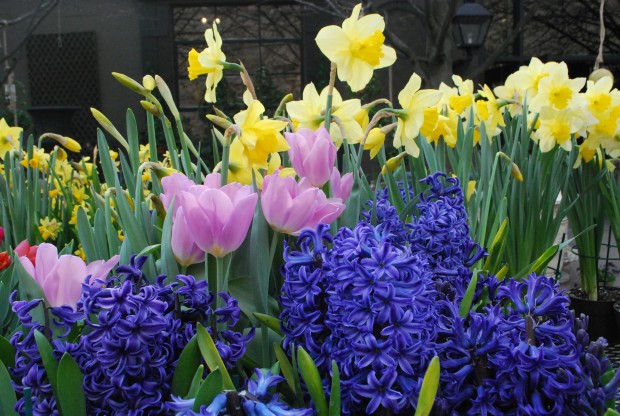
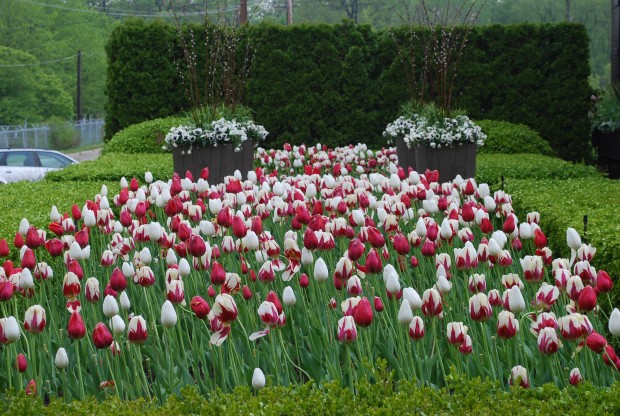

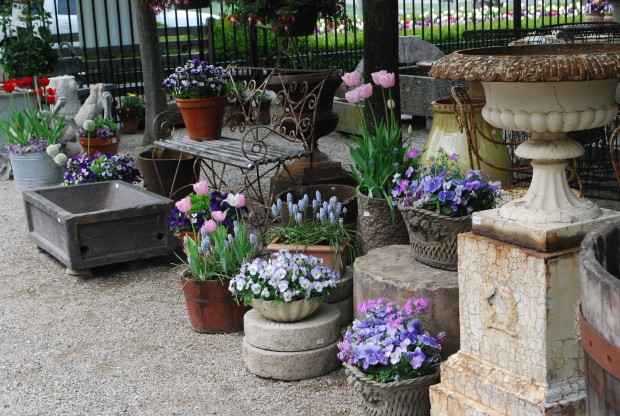
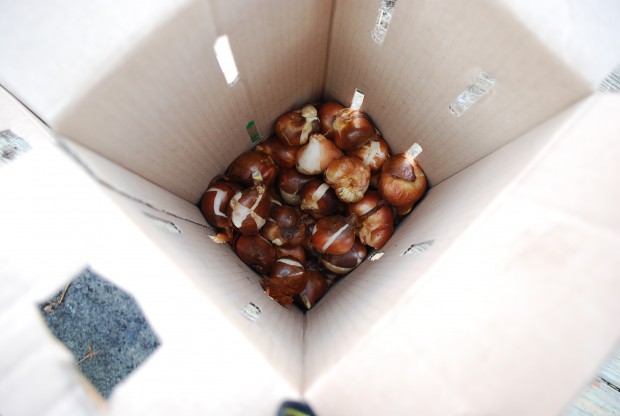
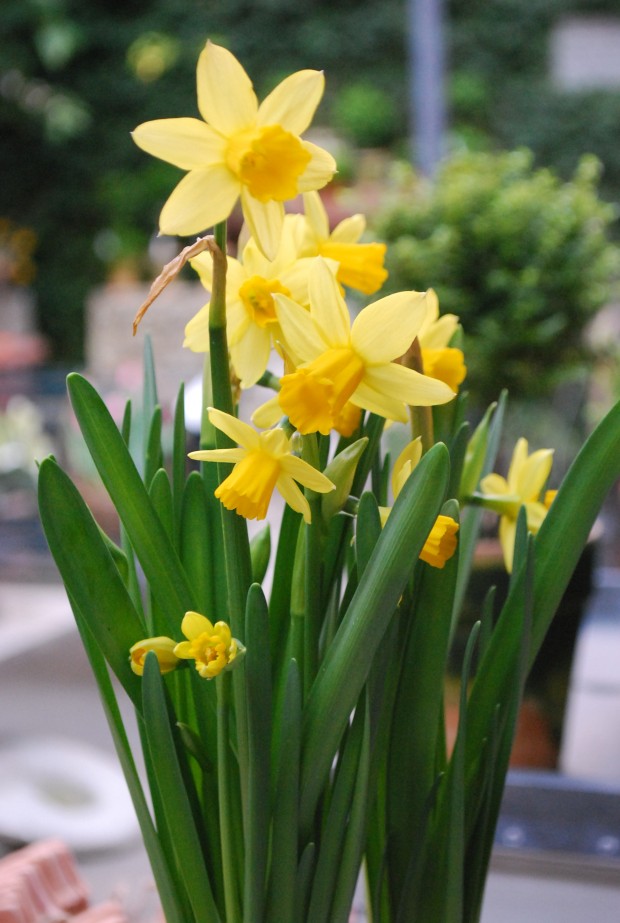

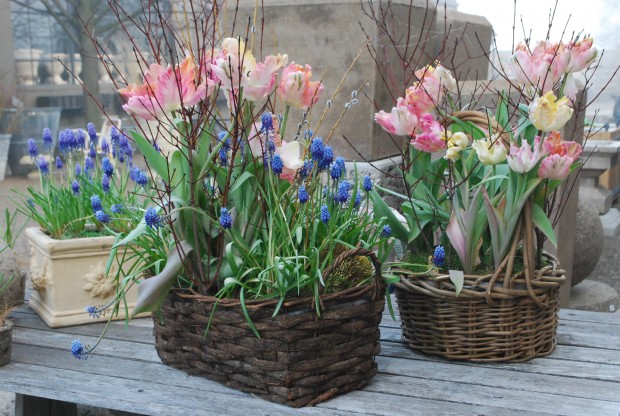
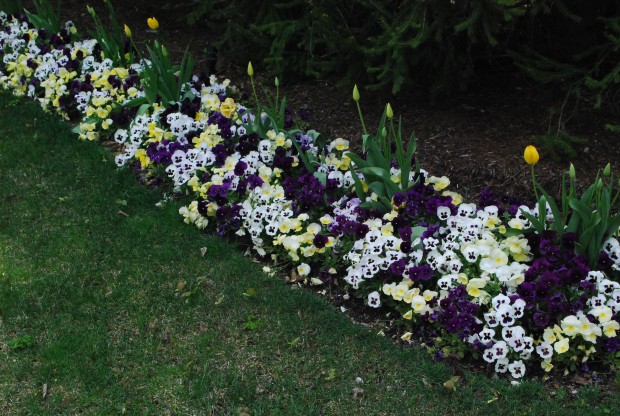

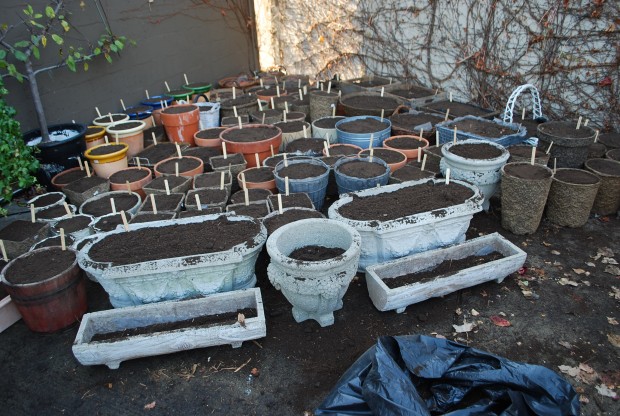
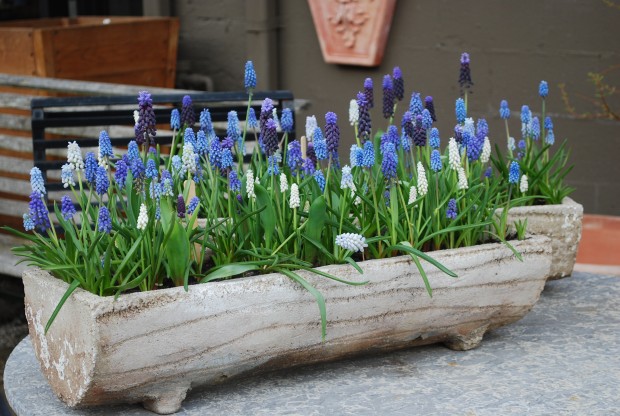
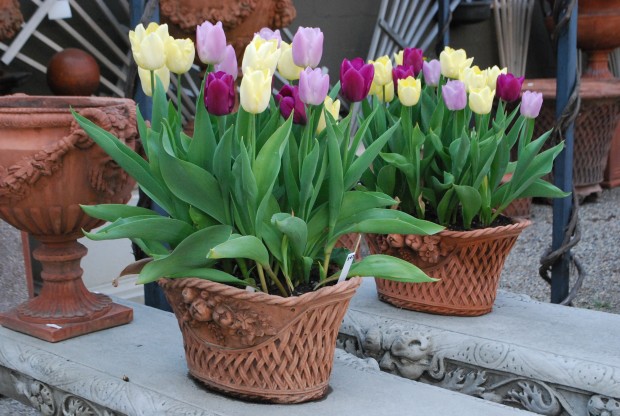
Ok Deborah, you’ve inspired me to plant some tulips in pots – should be fun to see what happens in spring – and I like the idea of mobility! Your containers are a superb… thanks for the gentle push to get it done.
When I don’t plant them, I have all spring long to regret it!
You do make us move on…I am still enjoying pumpkins and gourds.
This is probably a silly question… does your garage freeze in the winter? Do you water the bulbs in the pots before spring? I have tried this before and my bulbs just turned to mush. Any advice would be appreciated. Thanks!
My garage does not freeze hard-and by that, I mean the garage at the shop. Mushy bulbs means the bulbs froze through and through-they got too cold. Do you have a spot in the garage to put them that is next to a heated house space? Keep the pots off the floor-on boards, or something. You can bury them in a compost pile outside, if you have one. My best advice? Try again.
The change in the weather is a shock. I was hoping for a long fall with lots of soaking showers. I guess not! Got .15″ rain last night in southern Wisconsin, which is pathetic after September’s total of only .98″ at my house. Just got a note from the city’s water utility that my water usage has been so high that I should check for leaky plumbing! It’s not the plumbing; it’s the outdoor watering to try to save my garden. Did just order some paperwhites and species tulips. But maybe I will consider potting up some bulbs, esp. if can just drop the container into a pretty pot. You are always such an inspiration.
It has been a really tough season, hasn’t it? I can’t believe I have had to pack in all of my containers at home already. We’ve had a little piddling rain-nothing substantial. But my diascia are still blooming like crazy, as are the Japanese anemones. Otherwise, the garden looks pretty quiet.
Deborah,
Thanks for the inspiration. My experience echoes Kristin’s: my bulbs turned to mush! I had grand aspirations a couple of years ago; I planted 3 large containers full of tulips and daffodils. My problem (as I just learned from your post) was that I left the pots outside uncovered; I assumed they “needed” the cold. Needless to say, nothing grew. Now I know better!
As an aside, I was never a big spring bulb fan. It seemed like too much investment for just 1-2 weeks of bloom, plus the “die-back” period required for daffodils was a deal-breaker for me since I didn’t want the dying foliage to be competing with my summer annuals. A couple of years ago, I Googled something like “longest blooming daffodils,” and I discovered ‘Quail.’ They are touted to be among the longest-blooming of daffodils. I decided to give them a try and have been really pleased. I’ve ordered 100 bulbs for each of the past 2 seasons. My yard is relatively small, so I plant them in the same space I dedicate to my summer annuals (in-ground — not in containers). I have 3 mass plantings — each with approx. 33 bulbs. In NE Indiana, they start blooming in mid-late March, peak mid-April, and carry over to early-mid May! I cut the foliage off in mid-late May when I’m ready to plant summer annuals in the same space — knowing that this is “incorrect.” Surprisingly, about 1/3 of the bulbs that bloomed the prior year bloomed the next year even though they were cut off too early (I can differentiate because the older bulbs’ foliage is greener compared with the blue-green foliage of the newest bulbs). The extra blooms merely added to the blooms from the newly-planted ones. ‘Quail’ blooms are small, but each stem yields multiple blooms. From a distance, the effect is quite nice. Basically, I treat the bulbs as annuals, and if a few come up the next year, that’s just icing on the cake. Given the long duration of bloom, this is a bulb investment I’m willing to make.
Dear Alan, very few plants offer more than 2 weeks of bloom! Daffodils, lilacs, roses-most plants don’t bloom for long. Daffodils are great in ground-if you have lots of space. The small bulbs, planted in a perennial garden take up next to no space, even if you wait for the foliage to cure. Try the larger bulbs in pots again-and p[roectect them from a hard through and through freeze. Deborah
Deborah. Spring bulbs…..hmmm. They sure do require a lot of patience, two seasons’ worth, and a whole lot of faith, that something as spectacular as you imagine will actually appear. And funny you should mention pots, as I came across about half a dozen shallow-planted bulbs I had cast off from spring’s bloom, and wondered if they would survive in a pot over winter. Of which I have many, pots that is, all still filled with perennials waiting patiently for a winter home in the earth I just tilled. So, on your recommendation, the plants and bulbs will swap homes for winter. An ecological exchange, you might say. Thanks for the idea. And for the incentive to get those plants out of those pots. Tom in NC.
Tom, we have a warm week forecasted-that will be incentive for me to plant bulbs for sure. I hate planting them in the ground when it is freezing cold. I am not planting perennials if I can help it. Its just too late for them to take hold here. Some landscapes we are doing-we’ll wait until spring to plant them. Lots of pots of spring bulbs sounds great. Deborah